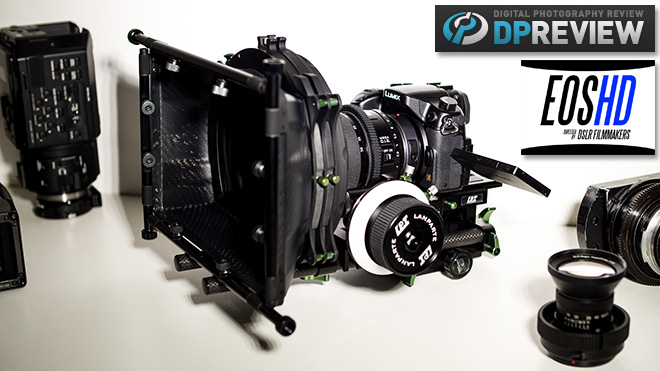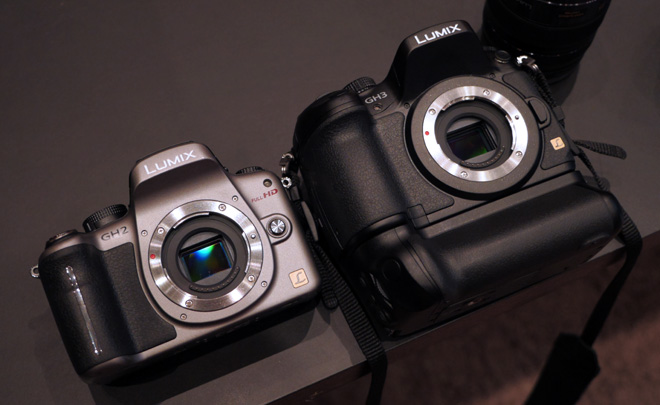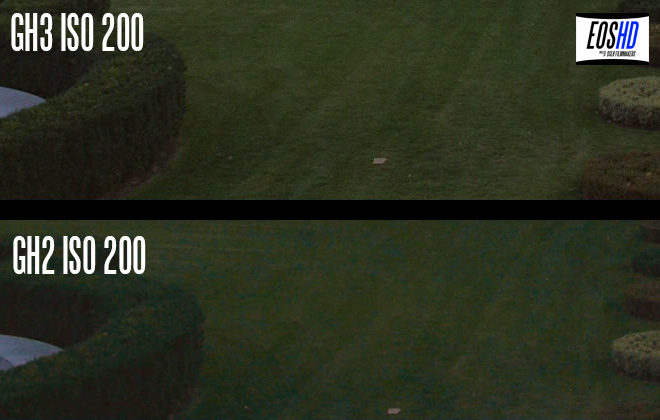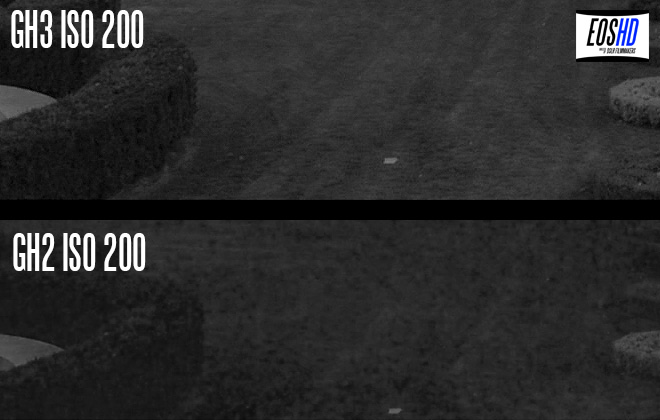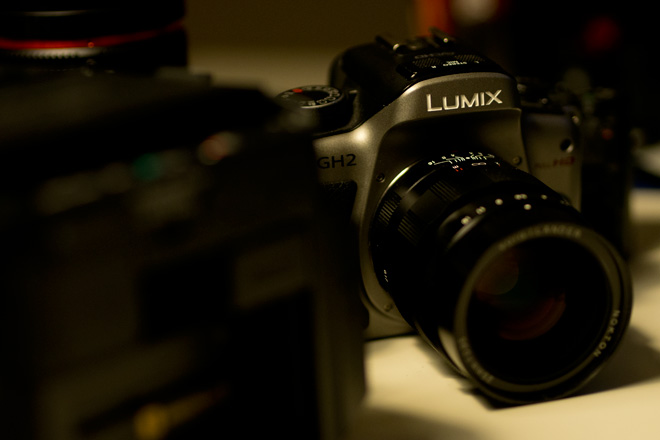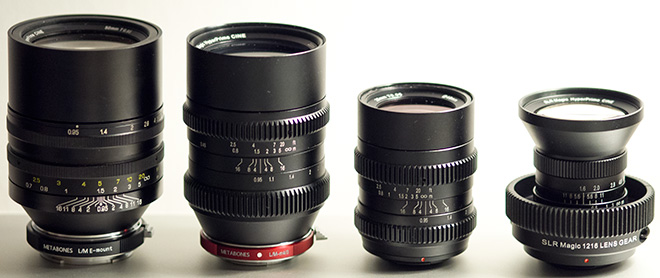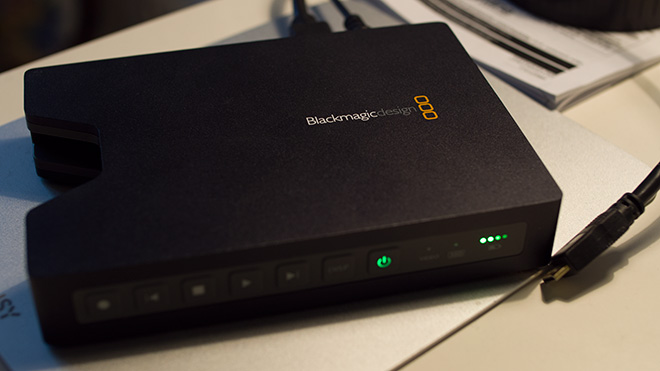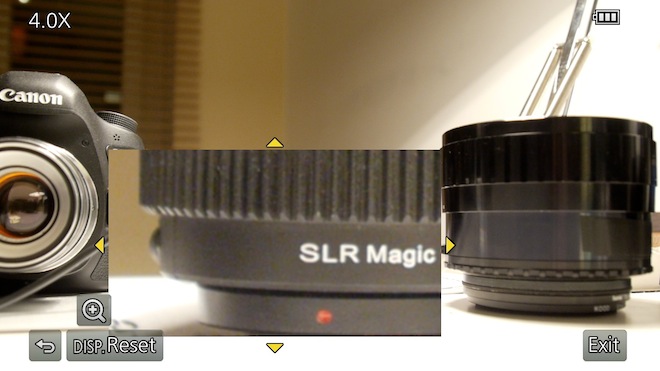Above: my GH3 kitted out with Leica 14-50mm F2.8, Lanparte follow focus, carbon matte box and baseplate
Six months in the making here is my final and full review of the Panasonic GH3 jointly published with DPReview.com. I highly recommend checking out that review as well, to which I contributed the video mode insights.
The Panasonic GH3 is an affordable $1299 hybrid camera and has a special legacy to build on with indie filmmakers.
Does it succeed?
[vimeo]http://vimeo.com/64102118[/vimeo]
Whilst still early days, the landscape is rapidly changing for digital cinema cameras.
I’m surprised at how soon 4K and raw video have become accessible but surprised too at the small trickle of affordable cameras with those features (all from Blackmagic!). I’d have liked to have seen more progress with video on DSLRs particularly since the convergence of stills and video, is for me the future. Strategies seem to have changed though. Canon were once booked to sponsor the excellent Converge Festival only to pull out at the last moment and looking back this was probably a sign of a new big picture strategy. Separate video and stills products at vastly different price points.
Cinema EOS serves a comparatively small amount of people, so the lack of willingness to push video forwards for the masses is disappointing. Thankfully Panasonic have been forging ahead with their hybrid camera concept and with it comes much better video.
The improvements to the GH3 over the GH2 are not just down to image quality but the overall camera and features, but is the image we’ll focus on first…
Image Quality
At first glance you’d be forgiven for thinking the GH3 isn’t a huge step up from the GH2 in terms of image quality. Even on the lowest sharpness setting the GH2 pumped out an insane level of detail in 1080p well on par with the $15,000 Canon C300. The GH3 allows you to dial sharpness down far lower, which results in an image you have more control over in post. You can leave it softer for nicer looking skin tones and faces or dial it back up again for wide angle cityscapes. When you add a small amount of digital sharpening in post the GH3 bounds back up to the level of detail the GH2 is capable of, unlike the rather soggy 5D Mark III.
[vimeo]http://vimeo.com/63131168[/vimeo]Moire and aliasing is usually absent and mild when it does occur. You also need to be eyeballing a laptop at close proximity to really care, on a cinema screen it is softer. The GH2, though very good, was not completely without moire when using a very sharp lens. Shooting wide open on the GH3 will give you an almost sure-fire way of avoiding it. I have shot with it on various occasions now for 6 months and not once has it ruined a shot. I went back to some of my old Canon 60D and 600D footage the other day and it was extraordinary how bad it looks by todays standards especially on wide angle shots. The moire and aliasing on the Blackmagic Cinema Camera and GH3 are nowhere near the levels they are on those cameras. It was the sheer amount of false detail that shocked me – the amount of red and green speckles all over the image, on anything from hair to rivers and roads.
Compared to the 5D Mark III the Panasonic GH3 is able to resolve more detail and the 5D3 usually requires double the amount of digital sharpness in post to give detail some punchiness. I dial the GH3 up to around 15-20 with the Sharpen filter in Adobe Premiere. The 5D Mark III is often at 35-50. As a result the 5D Mark III has more digital sharpening artefacts. It has less detail, though the difference is not as noticeable when viewed on a good projector or TV and sat back at a distance.
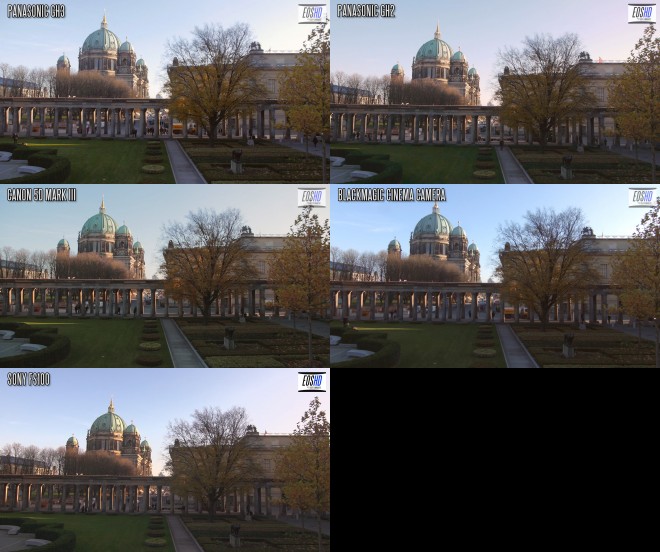
Click here to download all the 1080p frames above in one file (3.1mb) for your pixel peeping delight
In terms of colour, dynamic range and detail neither the GH3, GH2, 5D Mark III, FS100 or Nikon D5200 match the Blackmagic Cinema Camera either in ProRes or raw.
Where the GH3 falls short of the 5D Mark III and Nikon D5200 / D7100 is in low light. It’s fine at ISO 800, passable at ISO 1600 and a lot better than the GH2. But the 5D Mark III and Nikon D5200 hold onto their colours better, with far cleaner pictures.
A major area of improvement over the GH2 is with under exposed areas of an image. It’s important to be clear what this means. This doesn’t just cover shadows in a night shot at ISO 3200. We’re talking gardens in the shade at ISO 200. Almost any shot has an area of shadow where the light is dimmer than it is compared to the rest of the scene. Anything that is exposed to the left. Usually you don’t notice much noise in these under exposed areas when you crush the shadows, but if you’ve underexposed to protect a large highlight area like a window from blowing out and you want to correct the underexposed interior, here the GH3 does much better than the GH2. Better colour, smoother gradation, more contrast, far less noise. It is just easier to work with in post.
You can see an example below with the museum garden in the shade. The grass is brown and noisy with the GH2 but lush and detailed with the GH3 despite being underexposed and in dim light relative to the bright sky and horizon which I was exposing to protect.
Taking colour out of it and showing the luma channel results in a black and white image where you can really see how much noiser the GH2 is. Compression is also cleaner on the GH3, with less macro blocking in the lows.
There’s hardly any detail left in the lows on the GH2 even with the hack.
This all ends up in more usable dynamic range on the GH3, around 1-2 extra stops.
At high ISOs in low light the situation isn’t good but still an improvement on the GH2.
If you need good low light the Nikon D5200 is worth a look as is the much more expensive 5D Mark III.
Although the GH3 is still better in low light than the 7D, 60D, 600D, etc. and I have not optimised the picture profile for shooting in low light yet on the GH3. I recommend a high contrast picture profile. Shooting with a low contrast picture profile and bringing out the shadows results in rather poor saturation and a lot of brown muddy noise.
[vimeo]http://vimeo.com/59832019[/vimeo]Features
Many will want compare the Panasonic GH3 to a Canon DSLR for video, as many still shoot on these more traditional DSLRs when it comes to video. Allow me to summarise because it is a long list. Here’s what you get extra on the GH3 over an APS-C Canon DSLR.
- 1080/60p for slow-mo at the highest HD resolution
- Larger range of recording codecs
- Articulated screen (saves your back big time)
- OLED display technology
- Built in EVF usable during recording
- Mirrorless Micro Four Thirds mount
- Full-time auto-focus, AF tracking silent optical image stabilisation in video mode with compatible Micro Four Thirds lenses
- Uncompressed clean HDMI output at full 1080p, does not drop when you hit record
- Much higher resolution and detail
- MUCH less moire and aliasing
- Ex-tele crop mode, with better image quality than the one on the 600D and 700D
- Timecode
- Headphone socket
- Extensive manual audio control
- Speed Booster adapter coming July for full Canon EF / EFS lens support, 1 extra stop low light and effective Super 35mm sensor size
Tell me one good reason why you are still shooting on a Rebel.
Other things can be added to a Canon DSLR with Magic Lantern such as magic window focus assist, higher bitrates and zebra but they still cannot compete with the GH3 for image quality or all-round features for video.
Compared to the GH2
The GH2 was an underrated camera both for stills and video and only recently did the video virtues gain mainstream acceptance. The main difference with the GH3 is the addition of a weather sealed body, but you have to use it with a Panasonic or Olympus weather sealed lens for it to be of real use in bad weather. It isn’t something you should consider with manual lens adapters as that would risk water entering the lens mount.
The build quality of the GH3 is much better than any other Lumix camera before it (though the old L1 was lovely). It is larger but the larger body houses many advantages, chief of which is a MUCH bigger battery. Along with the new OLED displays which are very energy efficient the GH3 can run for hours on one charge. The larger grip and finally the long awaited battery grip are also very welcome.
Whilst the solid feel of the body isn’t quite up to the standard of the Canon 7D or 5D Mark III it is more like a weather sealed 60D so still pretty good.
The new design is not without a few quirks though.
I miss the dial on the front grip of the GH1, which moved to the back on the GH2. This also acted as a trigger which you could press inwards with your trigger finger. The top-rear dial on the GH3 is fine but the main real dial is nowhere near as responsive as similar ones featured on the 60D, 7D and 5D Mark III. I use it as a d-pad but I hardly ever rotate, mainly because the rear grip obstructs your finger or thumb and the dial seems pretty redundant seen as those you already have two dials (for shutter and aperture) on the top of the camera. Another quirk is that the Disp. button is too easy to hit accidentally since it sits on the rear grip and the headphone socket gets in the way of the rotating LCD. The HDMI also gets in the way but you are less likely to be using that and the articulated LCD at the same time.
Although the Panasonic AF100 had an ND filter wheel in a small Micro Four Thirds mount, the GH3 continues the fine tradition of video cameras without one. I really hope they can sort this out in future with new technology.
Lensing
The Micro Four Thirds range is really coming on song and it offers by far the biggest range of lenses, bigger than Canon. When the Metabones Speed Booster for Micro Four Thirds with Smart EF lens support comes out in the Summer you will be able to use the GH3 like a Super 35mm / APS-C Canon camera with the same lenses and same field of view.
Some lenses like the SLR Magic 35mm T0.95 unfortunately don’t adapt to the GH3 due to the smaller diameter of the lens mount, but their recent 25mm T0.95 and 12mm F1.6 are must-have lenses and improve the low light ability of the GH3 no end.
Most Micro Four Thirds lenses have the advantages of being small and light, so sometimes a SLR 12mm or Olympus 45mm can come in very handy on a rig that requires a small camera.
Other favourites are the Olympus 75mm F1.8 and Voigtlander 17.5mm F0.95. If you can’t afford the larger Olympus portrait lens you can pick up the 45mm F1.8 for $250 and that is also very sharp wide open though a bit light on the build quality front.
If you plan to buy the GH3 but don’t want to invest in Micro Four Thirds glass, Nikon AI/S lenses are a good option as they can be used on a variety of other cameras and cover full frame. You can use the older Nikon glass on the GH3 as they have manual aperture rings, and you can use it on a Canon 5D Mark III since Nikon to Canon adapts unlike the other way round. This adaptability is a huge advantage and it is why my GH3 gets far more use than my Nikon D5200 and the main reason why my 5D Mark III hasn’t been replaced by the Nikon D800 yet.
HDMI output
HDMI on the GH3 is full screen, full HD 1080p with the option to have it clean of icons. This is an advantage over the 5D Mark III which has an HDMI output of 720p and a year-long wait for a firmware update that addresses the shortcoming.
It is great for monitoring. Unfortunately there’s no real image quality advantage to be had from recording from it. The HDMI recording is slightly softer than internal recording and colour remains sampled at 4-2-0 with an 8bit colour-space.
For monitoring the HDMI output remains on during recording to the SD card. In common with all video capable DSLRs the mini-HDMI socket is more designed for cabling up a TV than for use ‘in the field’ whilst shooting – it doesn’t feel robust for connecting external monitors and EVFs. Seen as those the lack of focus peaking necessitates the use of an external monitor in many cases – I feel a more robust video output port would be an advantage.
Focus aids
Although an improvement on the GH2, the oddest thing about the GH3 is that none of the manual focus aids are designed for shooting video. A huge oversight. We’ve asked for peaking many times but Panasonic claim the feature isn’t supported by the Venus engine and cannot simply be activated.
I consider ND and focus to be two of the fundamental basics for shooting video. ND is forgivable as it is very difficult to engineer one into a tiny interchangeable lens mount though the larger AF100 managed it. But the $500 Sony NEX 5N has focus peaking so in my view it should be on the GH3! Of course you can use an external monitor via HDMI which supports focus peaking and generally helps focus all-round but the beauty of the small GH3 is that you should be able to use it without one.
Not only do the magnified focus assists disappear when you hit record (they obscure the full composition so not that useful anyway), the more useful magic window zoom for accurate centre-point focus disappears too when you hit record.
Conclusion
As I wrote at DPReview.com, the GH3 overall is a lovely improvement on the GH2. The only fly in the ointment is that it is outgunned on image quality by Blackmagic’s cameras and a bit of a let down in low light relative to the cheaper Nikon D5200.
The D5200 and Blackmagic Pocket Cinema Camera are cheaper than the GH3 and offer stern competition, but neither have the full range of features and 1080/60p offered by the GH3. Like the GH2 before it, Panasonic understand what it takes to make a good all-rounder which does stills and video to a high level in the same camera.
[vimeo]http://vimeo.com/54266780[/vimeo]There are some quirks over the GH2 but these are kept to a minimum. You lose the wider multi-aspect ratio 1.86x crop sensor, now it is a 2x crop. You get a little more moire, but less aliasing. You lose the hack but I am sure Vitaliy can bounce back. You gain far more than you lose and that makes it a recommended upgrade for all Panasonic GH2 owners.
What of the future? Well if the audio industry is anything to go by, professional equipment will plummet in price over the next few years as performance reaches such high levels and begins to plateau. With Blackmagic practically giving away 4K and global shutter it is only a matter of time before Red, Sony, Canon and even Arri have to drop their prices. Right now the GH3 has very little competition but that may be about to change.
Pros
- Improved overall image quality in both video and stills mode, especially with underexposed areas of a shot
- 1-2 stops more dynamic range in video mode thanks to cleaner lows
- Slow motion from 1080/60p
- Extensive new codec including high bitrate 50Mbit IPB and 72mbit ALL-I modes
- Quicktime MOV clips much easier to edit, AVCHD takes a back seat
- Best battery life of any consumer DSLR in video mode or live view
- European model can switch between 25p and 24p like a world-cam
- Much improved LCD and EVF over GH2
- Maintains articulated screen despite adding weather sealing
- Lossless digital telephoto mode (Ex-Tele)
- Micro Four Thirds lens range is really coming into bloom – so many nice choices
- Lens mount is very adaptable
- Timecode metadata in video recordings
- Built in timelapse feature
- Improved build quality and handling
- Headphone socket and 19 levels of manual mic gain
- Live exposure simulation and live histogram
- Magic-window manual focus assist
- Silent AF and optical image stabilisation support, including AF tracking whilst recording
- Touch focus during recording with variable racking speed
- Option for silent manual control via touch screen whilst recording
- Large number of dedicated buttons and dials
Cons
- Rear grip obstructs main rear dial
- Headphone jack obstructs articulated screen
- Disappointing low light performance relative to Nikon D5200 and 5D Mark III
- Video record button not responsive enough
- Start and end of recordings curtailed by 1-2 seconds
- No manual focus assist whilst rolling
- Colour cast shift on the OLED LCD when viewed at angle
- Slightly spongy and plasticy feel to buttons, dials and overall body despite improved build quality
- No improvement to image quality on external HDMI recording devices compared to internal codec
- No 120fps at lower resolutions such as 720p despite doubling of frame rate at 1080p
- Some mild moire and aliasing has crept in
- Slightly smaller sensor than the original GH1 and GH2
- Optical image stabilisation on Lumix lenses inferior to 5 axis IBIS on Olympus OM-D
- Somewhat miss the trigger jog wheel on front grip like GH1
- Poor Disp. button placement, too easy to press by accident on the rear grip
- Slightly long menus – up to 8 pages to scroll though in some cases



